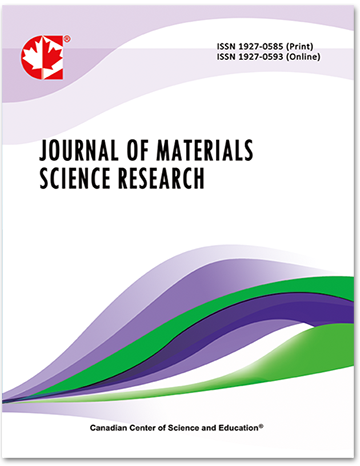A Short Literature Review on Turning and Milling of Cobalt Alloys
- Edinan Casagrande
- Diógenes Barbosa Teles
- Mauricio Rodrigues Policena
Abstract
Among the existing machining processes, turning and milling are characterized as the most used and consequently are considered the most important. Machining moves a market estimated at around 10% of gross national production. Many industrial components and parts are subjected to severe operating conditions, in corrosive environments, high temperatures what causes wear. With the development of industries, there is a need for steel alloys with different properties, to meet different purposes. Cobalt alloys, as well as others, arose from the need to develop metals that would meet the growing demand in applications with high temperatures and high working stress in gas turbine components. Due to their high mechanical and thermal resistance, these alloys are difficult to machining, a situation that requires in-depth studies to reduce process costs and improve the surface quality of machined parts. Machined surfaces may have different textures depending on the process. Turning and milling generate grooved profiles due to tool/part interaction. In many cases, roughness is used as an output parameter to control the process. Another important factor is the wear of cutting tools, which must be selected according to the material properties of the workpiece, machine tool and other parameters that influence its wear. Controlling the useful life of the tool is a decisive factor when you want to avoid loss of productivity, with fewer stops for changes, consequently, you have a more effective and economical production. The present study presents a brief review of the literature regarding turning and milling of cobalt alloys, regarding the optimization of machining parameters, tools used and the use of lubri-cooling techniques, with the objective of reducing the roughness of the parts, the tool wear, improve surface integrity and contribute to the sustainability of manufacturing processes when machining difficult-to-cut materials. In this review, a comparative analysis of the results is presented, indicating the gaps in research such as classification and processing of alloys, formation of carbides with non-uniform distribution, which impairs the performance of the tools. Some suggestions for future work indicate the absence of studies on the use of diamond and CBN tools, clarify the interaction medium lubricant-coolant-coating of the tools-alloy chemical composition and cutting parameters, in addition to dynamic analyzes in the cutting of hardened materials.
- Full Text:
 PDF
PDF
- DOI:10.5539/jmsr.v12n1p9
Journal Metrics
Impact Factor 2022 (by WJCI): 0.583
Google-based Impact Factor (2021): 0.52
h-index (December 2021): 22
i10-index (December 2021): 74
h5-index (December 2021): N/A
h5-median (December 2021): N/A
Index
- CAS (American Chemical Society)
- CNKI Scholar
- Elektronische Zeitschriftenbibliothek (EZB)
- EuroPub Database
- Excellence in Research for Australia (ERA)
- Google Scholar
- Infotrieve
- JournalTOCs
- LOCKSS
- NewJour
- PKP Open Archives Harvester
- Qualis/CAPES
- SHERPA/RoMEO
- Standard Periodical Directory
- Universe Digital Library
- WJCI Report
- WorldCat
Contact
- John MartinEditorial Assistant
- jmsr@ccsenet.org
